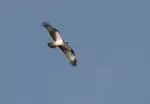Rutland Water Nature Reserve Photo Day
Standing in the second-floor viewing gallery at Rutland Water, I stared through rain-streaked windows at 25,000 overwintering waterfowl dotting Lagoon one.
So much life, so much potential, but how do you possibly pick your moment when everything is just distant specks? How do you turn this overwhelming, chaotic view into a single, memorable story when you're chasing the 'perfect shot'?
This is the story of how we discovered that the real prize isn't the sharpest photo, but learning to see perfection in the imperfect moments that unfold when you stop looking so hard.
For us, a day at Rutland Water is an investment before we even leave the house. They don’t permit dogs, so it requires calling in favours just to get out the door, an effort often compounded by taking that familiar wrong turn off the A1.
But as we navigate the detour, the frustration always gives way to anticipation, because we know what’s waiting: the kind of wild encounters that remind us why the best shots are often the ones we never planned.
Finding Photography Partners Who Share the Vision
The great thing about a day like this is that I wasn’t facing that overwhelming scene alone, or trapped in the mindset that I needed to capture it all perfectly.
I was meeting up with four other photographers from a Facebook group, each bringing their own perspective to what constitutes a 'successful' shot in the misty landscape below us.
Mel, a talented landscape photographer, saw the grey, atmospheric conditions as an opportunity rather than an obstacle, proof that there's beauty in what we might dismiss as 'imperfect' light.
It was Mel who later snapped that photo of me wrestling with my camera in one of the hides, the one you can find on my About Me page. It captures the reality of the day: not a majestic solo photographer at one with nature, but just one of a group of friends, enjoying a damp but happy day out, helping each other spot birds and sharing in the small victories.
This sense of shared discovery would prove to be the key to unlocking the day’s hidden treasures.
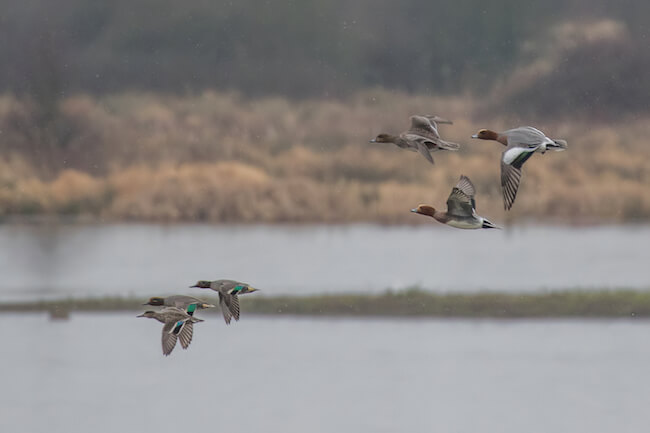 Teal (left) and Wigeon (right) flying over Lagoon 1
Teal (left) and Wigeon (right) flying over Lagoon 1The Magic Happens in the Margins
The friendly chatter in the hide quieted as we settled in to watch.
Rather than scanning the horizon for that elusive perfect composition, I let my eyes drift to the reeds right in front of us, not hunting for a subject, but simply watching the unscripted moments that can't be planned.
A tiny flicker caught my attention.
A male Stonechat was methodically working through the reeds, darting out to catch insects before returning to a mossy stump to enjoy his meal. We watched, captivated by this small, private world unfolding just metres away.
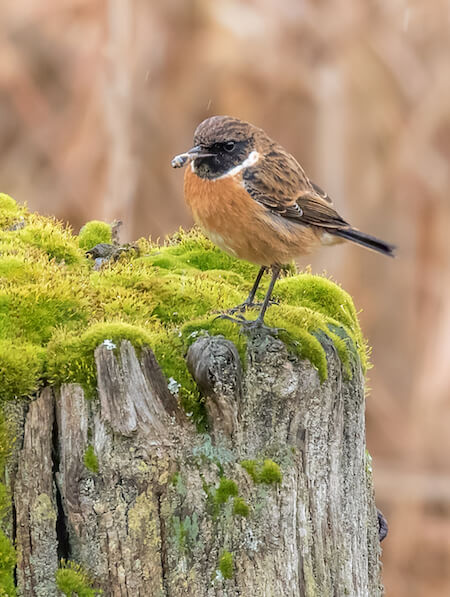 Male Stonechat with breakfast
Male Stonechat with breakfastSuddenly, a ripple of movement at the base of the reeds caught my eye, something sleek, silent, and purposeful.
A stoat. We were about to witness something no photographer could stage or perfect: nature's brutal efficiency in its rawest form. The attack was a flash of brown fur, and in an instant, the predator vanished back into the reeds with a tiny bird.
After tense seconds that felt like minutes, our Stonechat reappeared on his stump, looking entirely unconcerned.
He had survived.
The collective sigh of relief from our group reminded me that the most powerful wildlife moments aren’t always about the photograph—they’re about the shared experience of witnessing something wild and unpredictable.
Redefining Success: The Power of the “Record Shot”
Just as the adrenaline from the stoat encounter subsided, someone spotted a Water Rail—a bird I had never seen before.
Thanks to a fellow photographer’s directions, I finally found it, mostly hidden and skulking in the shadows. I raised my camera, knowing the light was poor and the distance tricky, and managed a few quick shots before it vanished.
Looking at the blurry image on my camera screen, I felt that familiar pang of disappointment.
It wasn’t “good enough to share.”
But that thinking was exactly what I'd been getting wrong all day. That photo, blurry as it was, captured something far more valuable than technical perfection. It held the thrill of discovery, the proof of a personal first, the evidence of a moment when the world surprised me.
That failed record shot taught me something crucial: in nature photography, 'technically perfect' and 'personally precious' are entirely different standards. The best shots aren't always the sharpest ones—they're the ones that remind you why you fell in love with watching wildlife in the first place.
When Generosity Creates the Best Equipment
“There are two redheads out on the far side,” a quiet voice said from my left.
When I asked what he meant, he specified, “Smew!”. Another bird I was desperate to see. They were impossibly distant, tiny specks my lens couldn't hope to resolve into anything resembling a 'good' photograph.
Seeing my frustration with my inadequate equipment, this stranger kindly offered me a look through his spotting scope. The view was incredible. I couldn’t take a photo through it, couldn't capture anything to prove the moment had happened. But I saw those Smew clearly, and it became one of the day's most delightful, memorable sightings.
In that moment, I realized his generosity had given me something more valuable than any expensive lens: the experience of the bird itself, unfiltered by my obsession with documenting it perfectly.
Sometimes the best wildlife encounters are the ones that can't be captured at all.
Practical Wisdom Earned Through Patient Observation
A place as vast as Rutland Water can feel overwhelming, but we discovered that patience and strategic positioning yield consistent rewards. After our excitement with rare sightings, we focused our limited time on simply sitting and watching from the hides overlooking Lagoon four.
From the Sandpiper hide, we were rewarded with a Great White Egret attempting to hide in the reeds, not a dramatic pose, just a bird being a bird.
Here we learned that the golden rule of birdwatching: patience is everything, and someone will always get a better shot the moment you leave! One of our group captured a lovely shot of the egret stepping into the open just after we’d moved on—but sharing in her success was part of the joy.
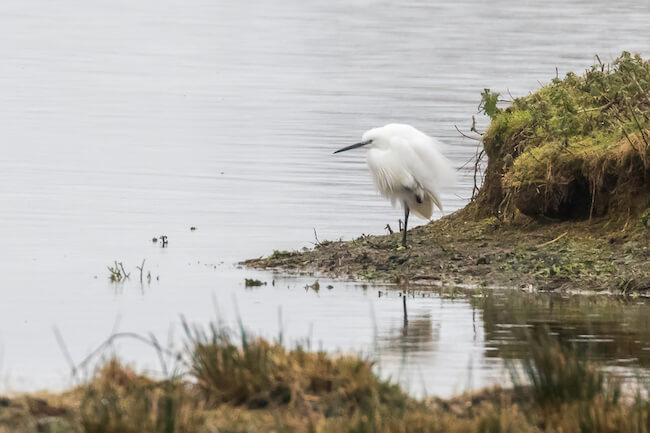 Little Egret
Little EgretFrom another hide, we were entertained by a motionless Little Egret, feathers puffed against the cold, and a single male Goldeneye swimming among the common ducks.
These weren’t dramatic, once-in-a-lifetime encounters, they were lovely, quiet moments that filled the afternoon. The kinds of sightings that teach you that consistency comes not from chasing perfection, but from giving yourself permission to find beauty in the ordinary.
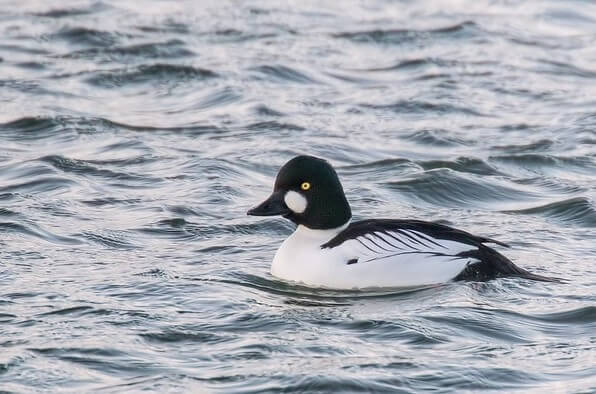 Male Goldeneye duck
Male Goldeneye duckThe Answer We Found That Day
So what’s the answer to turning an overwhelming scene of 25,000 distant waterfowl into a memorable story? It’s this: stop looking for the perfect shot and start enjoying the moments that are happening right in front of you.
The most rewarding nature experiences come not from technical mastery, but from surrendering your expectations and staying open to whatever wants to unfold. Your best encounters might come from watching a tiny drama in the reeds instead of scanning the horizon. Your most memorable sighting might be through a stranger's scope, uncapturable but unforgettable. And your treasured photos might be the blurry ones that remind you of the pure thrill of discovery.
Don’t let the fear of imperfection keep you at home.
Don’t worry if you don’t have the biggest lens or can't create Instagram-worthy compositions.
Just show up, accept the imperfect light, the inconvenient weather, the distant birds, and let the day surprise you. The chaos of 25,000 birds becomes a single, powerful story when you stop trying to capture it all and start celebrating the beautiful, messy moments that choose to capture you instead.
You’ll be amazed at what you find when you redefine what it means to have the perfect day.
While you are here, you might like to check out our experience of taking one of Rutland Water’s Osprey Cruises.
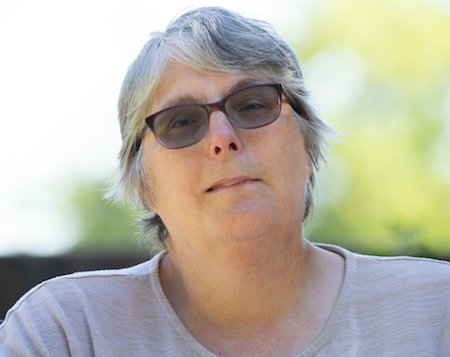
About the Author
For me, it’s never been just about bird names or camera settings, but the thrill of seeing a distant speck turn into a hunting kestrel.
After years of learning how to notice and photograph those moments, my camera has become the tool - and this site the field notebook - where I share what I’ve discovered.
If you’re ready to look a little closer, you’ll find the trips, lessons, and small wins that can help you see and photograph the wildlife right on your doorstep.
Step Behind the Wild Lens
If you’ve enjoyed your time here, you can also follow along by email.
I send the Wild Lens newsletter occasionally. It’s where I share:
- Fresh field notes and recent encounters
- The stories behind favourite photos
- Practical tips that don’t always make it onto the site
You’ll get new UK wildlife guides, photo tips, and ideas for your next walk, straight to your inbox.
